10 Important Mistakes to Avoid Setting Up Your Baby Registry
Setting up your baby registry? Learn the 10 mistakes to avoid for a smooth experience. Get what you need without the stress!
BABY REGISTRY
Emily Harper
1/19/202522 min read
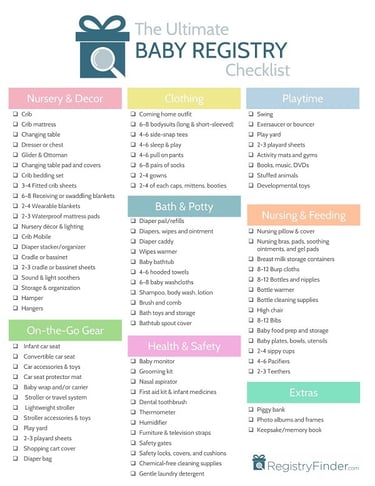

The biggest baby registry mistakes new parents regret—don’t be one of them!
Introduction:
Setting up your baby registry should be thrilling, but it often turns into a stressful process. With countless products and endless advice, it's easy to feel lost. In fact, nearly 40% of new parents end up with items that just collect dust. This article will highlight 10 common mistakes people make while creating their baby registry and, more importantly, how to steer clear of them. Whether you're registering for the first time or trying to improve your experience, these tips will help you make the right choices.
1. Why Skipping Research on Baby Essentials Is a Rookie Mistake
2. Overloading Your Baby Registry with Clothes: A Lesson in Restraint
3. Forgetting to Include Big-Ticket Items: A Missed Opportunity
4. Ignoring Your Lifestyle When Choosing Baby Items
5. Not Considering Seasonal Needs in Your Baby Registry
6. Failing to Test Products Before Adding Them to Your Registry
7. Overlooking Postpartum Essentials
8. Not Leveraging Discounts and Registry Perks
9. Forgetting About Long-Term Use Items

1. Why Skipping Research on Baby Essentials Is a Rookie Mistake
When I created my first baby registry, I was embarrassingly naive. I thought, "How hard can it be? Just pick the cutest things and listen to what others recommend." Well, that plan backfired—hard. I ended up with newborn-sized shoes (adorable but useless), duplicates of items I didn’t even need, and a glaring lack of actual essentials. Trust me, if you don’t take the time to research, you’ll regret it. It’s not just about saving money; it’s about sanity, space, and avoiding those “why didn’t I think of this?” moments when the baby comes.
Why Knowing What You Truly Need Changes Everything
Excitement often takes over when preparing for a baby, and that’s completely normal. But let me ask you this: Do you want your nursery filled with Instagram-worthy items that don’t work for your life?
Small space? That oversized swing isn’t just impractical—it’s a nightmare.
Planning to breastfeed? Then skip the expensive bottle sterilizer (or at least hold off for now).
Lifestyle matters. Are you always on the go? Lightweight strollers and portable cribs are game-changers.
This isn’t about limiting joy. It’s about making decisions that keep your life functional. A little thought upfront saves you from drowning in clutter or scrambling for basics later.
How to Spot Baby Gear That Actually Works
If you’re like me, you’ve probably fallen for pretty packaging or glowing ads. Don’t do it. Here’s how I learned to separate the real winners from the duds:
Expert Reviews: Websites like BabyGearLab, What to Expect, and Consumer Reports provide honest, detailed breakdowns.
YouTube Reviews: Watching real parents demo products can be eye-opening. They’ll show you the quirks no glossy ad will mention.
Parenting Groups: Dive into Facebook or Reddit groups where parents spill the truth—brutally and unapologetically. It’s a goldmine of practical advice.
The common thread? Look for recurring themes. If everyone complains about a product breaking or praises something as a lifesaver, that’s your signal.
Essentials vs. "Nice-to-Haves"—Where Do You Draw the Line?
Here’s a gut-check exercise I wish I’d done: Focus on survival-level basics first—think eating, sleeping, and getting around. If it doesn’t make your day-to-day easier, it’s not an essential.
Definite Essentials: A safe crib, reliable car seat, quality diapers, and a sturdy stroller.
Borderline Luxuries: Wipe warmers (they’re nice, but your baby won’t riot without warm wipes), designer diaper bags, or high chairs for occasional use.
A simple question works wonders: How often will I use this? If it’s daily, it’s worth prioritizing. If it’s “only at grandma’s,” you can reconsider—or maybe someone else can gift it.
Lessons Learned: Make It Personal
Ultimately, your baby registry is as unique as your parenting journey will be. The mistake I made was trying to copy what others swore by instead of asking, “Will this work for me?” Take a deep breath, think practically, and research like your peace of mind depends on it—because it does.
Start early. Research smart. Your future self (and your budget) will thank you.
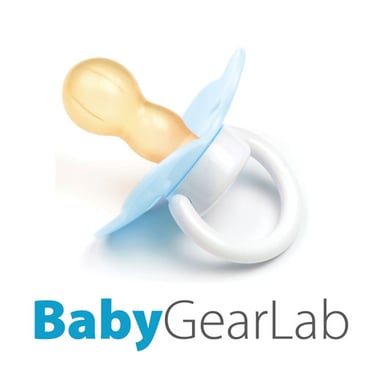

2. Overloading Your Baby Registry with Clothes: A Lesson in Restraint
When I put together my baby registry, I’ll admit: I couldn’t resist the allure of tiny onesies, miniature socks, and frilly little outfits. Every item was cuter than the last, and I kept adding “just one more.” Big mistake. By the time my baby shower rolled around, I was buried in a sea of baby clothes—all adorable, but wildly impractical. Spoiler alert: my baby wore maybe half of them, and some were outgrown before they even got a chance.
Let me save you from making the same mistake. Here’s what I wish I’d done differently.
Why Too Many Clothes in the Same Size Is a Problem
Babies grow fast. It’s almost shocking how quickly they move through sizes—especially during those first few months. Here’s the reality I learned the hard way:
Newborn Sizes Are Short-Lived: If your baby is on the bigger side, they may skip the newborn phase entirely or outgrow it in a week or two.
Duplicates Are a Waste: When you have 15 newborn onesies and only time to rotate through a handful, the rest just sit there, unworn, collecting dust (or spit-up).
Missed Opportunities: Those registry spots could’ve been used for items you’ll actually rely on, like a good diaper pail or a car seat cover.
Seeing a pile of clothes with tags still attached feels wasteful, especially when you realize how quickly babies move on to the next size.
The Blink-and-They’ve-Outgrown-It Phenomenon
Here’s a dose of perspective:
Newborn Sizes: Generally fit up to 8 pounds, and some babies outgrow them by week two (or skip them altogether).
0-3 Month Sizes: A safer bet, but even here, babies might outgrow them before the three-month mark.
Growth Spurts: Your baby could jump sizes seemingly overnight, leaving an entire wardrobe untouched.
This rapid-fire growth means it’s smarter to think ahead, plan for multiple sizes, and focus on the practical instead of the Instagram-perfect.
How to Strike a Balance Between Cute and Practical
Here’s what I’d tell any new parent building their registry:
Register for a Range of Sizes: Include 3-6 months, 6-9 months, and even 12-18 months. Babies don’t stop growing, and having clothes ready for future phases is a lifesaver.
Prioritize Everyday Staples: Babies live in onesies, sleepers, and rompers. They’re comfortable, easy to change, and stand up to the constant spit-ups and blowouts.
Limit the Fancy Stuff: Yes, frilly dresses and mini tuxedos are adorable. But how often will your baby actually wear them? Keep it to one or two for special occasions.
Plan for Seasons: If your baby will be six months old in winter, think cozy fleece sleepers and warm layers. If they’ll hit a growth spurt in summer, focus on lightweight outfits.
Count on Gifts: Trust me, people love buying baby clothes. Even if you don’t register for them, you’ll get plenty. Focus your registry on items like diapers, feeding gear, or a baby carrier that you actually need.
Learn from My Mistakes: Think Long-Term
When it comes to baby clothes, less is truly more. Babies are messy, fast-growing little tornadoes, and a drawer full of impractical outfits will only frustrate you. By registering strategically, you’ll save space, money, and time—and you’ll actually use what you have.
So, go ahead and add that one ridiculously cute outfit to your registry. But beyond that? Keep it simple, plan ahead, and let practicality guide your choices. Your future self—and your nursery storage—will thank you.
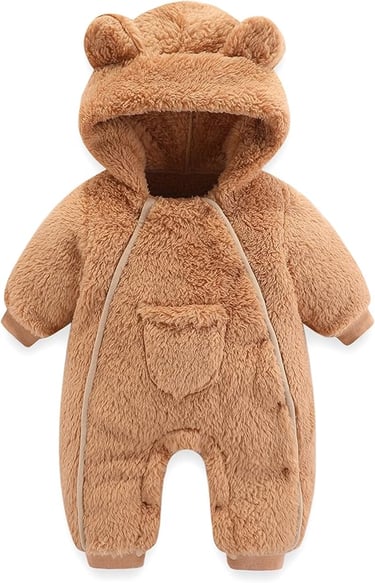

3. Forgetting to Include Big-Ticket Items: A Missed Opportunity
When I created my baby registry, I avoided adding expensive items because I didn’t want to seem greedy. I stuck to small, practical things, thinking it was the polite route. But as the shower date approached, family and friends started asking, “Do you need a crib? A stroller? Something bigger?” That’s when it hit me—I’d completely missed the mark. By skipping over the essentials, I left people guessing how to truly help, and I ended up purchasing a lot of big-ticket items on my own.
Here’s why adding those pricier items to your registry is not only okay—it’s the smart move.
Why It’s Okay (and Wise) to Include Expensive Items
Let’s cut to the chase: baby registries exist to help parents prepare, and big-ticket items are a huge part of that. Here’s why you shouldn’t hesitate:
People Want to Help: Friends and family love contributing to meaningful gifts, especially if they know the item will actually get used.
Practicality Over Trinkets: Many loved ones would rather chip in for a high-quality stroller than buy a random stuffed animal or another set of onesies.
Essential for Baby’s Comfort: Big-ticket items like cribs, car seats, and breast pumps aren’t just nice-to-haves—they’re critical for your baby’s safety and well-being.
By including expensive items, you’re giving your loved ones a chance to support you in ways that truly matter.
The Beauty of Group Gifting
Here’s a feature I wish I’d known about earlier: group gifting. Many online registry platforms, like Amazon and Babylist, let multiple people contribute to a single item. This makes those pricier necessities much more manageable for your guests.
For example:
If a stroller costs $500, five people chipping in $100 each feels a lot less daunting than expecting one person to cover it all.
Group gifting also ensures you won’t receive duplicates of smaller, less useful items.
Pro tip: Mention in your shower invitations that group contributions are welcome. This simple note encourages people to collaborate, making it easier for them to tackle the bigger items together.
Big-Ticket Items Worth Adding to Your Registry
If you’re unsure where to start, here are some essentials that are absolutely worth the space on your list:
Crib and Mattress: Babies spend a lot of time sleeping (hopefully!), so a safe and durable setup is a must.
Travel System: A car seat and stroller combo is invaluable for outings, saving you from buying these separately.
Electric Breast Pump: For breastfeeding parents, a reliable pump can be life-changing.
Baby Monitor: Whether you go for audio or video, this provides peace of mind while your baby sleeps.
Convertible Car Seat: These grow with your baby, making them a cost-effective choice in the long run.
Nursery Furniture: A dresser that doubles as a changing table is a versatile and space-saving option.
High Chair: While you won’t need it immediately, it’ll be a lifesaver when your baby starts solids.
Why You’ll Thank Yourself Later
Imagine setting up your nursery and realizing everything you need is already there, thanks to your registry. Or seeing a beautiful stroller arrive, knowing it was gifted with love. Including big-ticket items isn’t presumptuous—it’s practical and empowering.
Your registry is an opportunity to get the support you need during an overwhelming (and expensive) time. By adding those big-ticket items, you’re giving loved ones a chance to contribute meaningfully—and ensuring you’re prepared for your baby’s arrival. Don’t shy away; embrace it. You’ll be so glad you did.

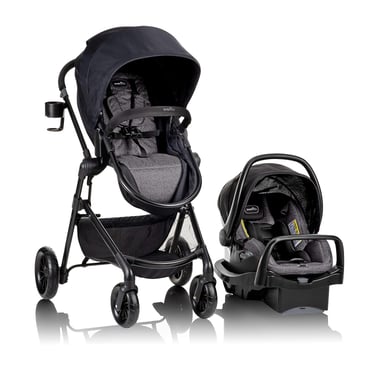
4. Ignoring Your Lifestyle When Choosing Baby Items
When I first created my baby registry, I let excitement and aesthetics take the wheel. I chose items that looked trendy or were raved about online, without pausing to think about whether they’d fit my actual lifestyle. The result? A bulky swing crammed into my tiny living room, a designer diaper bag I barely used, and a travel crib that sat unopened for months. Here’s the lesson I learned: your lifestyle matters—a lot—when deciding what to put on your baby registry.
Why Your Home and Routine Should Guide Your Choices
Your home’s size, layout, and your daily habits should be the foundation for your baby registry. Here’s why:
Space Constraints: If you live in a small apartment, oversized gear can quickly make your space feel cramped and unmanageable. Look for compact, foldable, or multi-functional items.
Daily Routine: Consider how you spend your time. If you’re always on the go, prioritize portable gear. If you’re more of a homebody, focus on items that enhance your indoor life, like a cozy rocker or baby lounger.
Home Features: A home with multiple levels may benefit from duplicate items (like a diaper caddy upstairs and downstairs), while a single-floor home might not need the extra set.
By factoring in these details, you can select items that truly integrate into your lifestyle instead of becoming frustrating obstacles.
Smart Solutions for Small Spaces and Busy Lifestyles
If space is tight or you value simplicity, multi-functional or space-saving items can be game-changers. Here are some ideas:
Convertible Cribs: These grow with your baby, transitioning from crib to toddler bed, and sometimes even a full-size bed.
Foldable High Chairs: These compact designs are perfect for small dining areas or for tucking away when not in use.
Portable Playards: They’re not just for travel—many also serve as play spaces or changing stations.
Baby Carriers: These let you skip the bulky stroller for quick errands or crowded spaces.
Collapsible Baby Gear: Items like foldable bathtubs or swings save space without sacrificing functionality.
Common Lifestyle-Registry Mismatches to Avoid
Without careful planning, it’s easy to end up with items that don’t fit your needs. Watch out for these common mismatches:
Oversized Gear in Tight Spaces: Large swings, cribs, or bassinets can overwhelm a small home. Look for compact options instead.
Overly Fancy Diaper Bags: If your outings are short and infrequent, a smaller, simpler bag will do just fine.
High-Tech Baby Monitors: In small homes, you may not need a monitor with all the bells and whistles—an audio-only option might suffice.
Non-Portable Items for On-the-Go Parents: If you travel often, prioritize lightweight, easy-to-pack gear.
Tips for Choosing Items That Match Your Lifestyle
Visualize Daily Life with Baby: Think about where your baby will sleep, play, and eat—and choose items that fit into those spaces seamlessly.
Prioritize Convenience: Focus on items that make your life easier, not more complicated. If it’s hard to set up, store, or clean, it might not be worth it.
Think Ahead: Consider how your needs will change as your baby grows and select items that adapt with your family.
The Payoff of Thoughtful Choices
When your baby arrives, the last thing you want is to feel overwhelmed by items that don’t fit your home or routine. By aligning your registry with your lifestyle, you’ll create a setup that’s functional, practical, and enjoyable. Your registry isn’t just a wish list—it’s a tool to prepare for parenthood in a way that truly works for you.
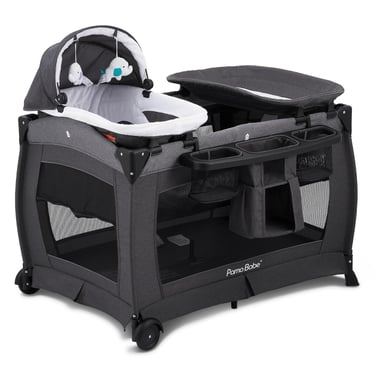

5. Not Considering Seasonal Needs in Your Baby Registry
When I was building my baby registry, I completely overlooked the seasons—and, trust me, I paid for it later! My baby was born in winter, but I had stocked up on short-sleeve onesies and lightweight blankets, which were utterly useless against the cold January nights. Timing matters—especially when it comes to baby clothes and gear. Planning ahead for the weather can save you from those last-minute panic shopping trips.
Why Timing Matters for Baby Essentials
Babies grow so fast that the seasons will play a huge role in what they need throughout their first year. Here’s how different seasons impact what you should register for:
Clothing: Babies outgrow clothes quickly, so think about what size your baby will be during each season. If your baby is due in spring, you’ll need lighter clothing for the warmer months but should plan ahead for the colder months when your baby outgrows their newborn clothes.
Outdoor Gear: Weather-specific gear will be essential. For winter babies, a heavy-duty stroller with all-terrain wheels and car seat bunting are important. For summer babies, lightweight strollers and breathable fabrics are key.
Car Seat Covers and Stroller Accessories: A stroller rain cover or car seat shield for wet seasons, or sunshades and UV-protective gear for the summer, will make outings more comfortable and safer.
Planning for Weather-Appropriate Essentials
By thinking about the seasons, you can avoid buying items that will go unused. Here’s how to plan for each season:
Clothing:
If your baby will be three months old in summer, register for lightweight clothes in sizes 3-6 months.
For winter, opt for footed onesies and layers that are easy to add or remove.
Blankets and Swaddles:
For warmer months, choose breathable muslin swaddles that let air circulate.
For colder months, go for thicker fleece or knitted swaddles to keep your baby snug.
Weather-Appropriate Gear:
Rainy or wet climate? Consider adding a waterproof stroller cover and diaper bag to your list.
Cold climate? Think mittens, hats, cozy car seat covers, and thermal blankets.
Examples of Seasonal Items You Might Overlook
Sometimes, the little things get forgotten, especially when thinking about the weather. Here are a few essentials based on the seasons:
For Winter Babies:
Footed onesies with fleece lining
Car seat bunting bags (check for safety approval)
Infant snowsuits that allow movement but keep baby warm
For Summer Babies:
UV-protective clothing and sun hats
Lightweight, breathable baby carriers
Portable fans for strollers to keep baby cool
For Rainy or Windy Seasons:
Waterproof stroller covers or weather shields for car seats
Quick-dry baby wraps or ponchos
Thinking Ahead to Seasonal Transitions
The seasons will also change as your baby grows, so it’s essential to plan ahead for when they transition to solids, become more mobile, or start spending more time outside. For example:
Winter babies may be starting solids as summer rolls in, so having an outdoor-friendly high chair or picnic blanket could be really handy.
Summer babies may need extra layers and warmer items when the temperature starts to drop in the fall.
The Bottom Line: Preparing for the Weather Shifts
By taking the time to consider seasonal needs when creating your baby registry, you’ll be better prepared for those unpredictable months. And trust me, there’s nothing quite like the relief of having exactly what you need when the weather changes and your baby needs it most. Plus, it’ll make your life easier and more comfortable when you’re not scrambling for a jacket on that cold winter walk or trying to cool down your baby on a hot summer afternoon.
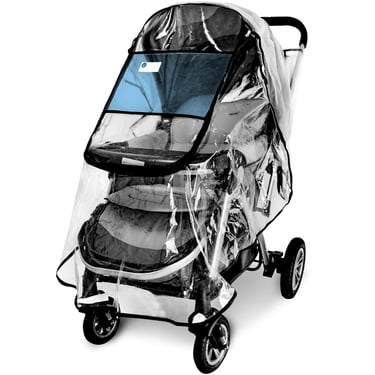

6. Failing to Test Products Before Adding Them to Your Registry
When I first set up my baby registry, I made the rookie mistake of relying too heavily on reviews and recommendations instead of trying products myself. While some items were fantastic, others fell short of expectations. Testing products before adding them to your registry might seem like an extra effort, but it can save you from a lot of frustration down the line. After all, what works perfectly for one family might not be ideal for yours.
Why Hands-On Testing Can Save You from Frustration
Baby products can look perfect online or in stores, but the reality of using them day-to-day is often different. For example, a stroller with lots of fancy features might feel heavy and difficult to maneuver through narrow aisles. Or, that stylish diaper bag might not have enough compartments to keep everything organized the way you need.
Testing products helps you uncover potential deal-breakers before you commit. Does the stroller fold easily with one hand? Does the car seat fit securely in your car? Can you adjust the baby carrier without feeling like you’re solving a puzzle? These are things you’ll only discover by trying out the products yourself.
Tips for Checking Durability and Ease of Use
Not sure where to start? Here are some ways to test baby products before adding them to your registry:
Visit Baby Stores: Many stores let you test strollers, carriers, and other gear right on the sales floor. Take this opportunity to see how things work in real life.
Attend Baby Expos: These events are a great way to interact with a variety of products from different brands, often with demonstrations included.
Borrow from Friends or Family: If someone you know already owns the item you're considering, ask if you can borrow it for a day or two to test it out. This is especially useful for larger items like bassinets or swings.
Look for Hands-On Reviews: If you can’t try an item in person, look for video reviews where others demonstrate how the product works (or doesn’t). These can provide invaluable insights.
When testing products, think about the long term. Consider whether the item feels durable enough to last, how easy it is to clean, and whether it can grow with your baby or become obsolete after a few months.
Examples of Products Worth Testing Before Committing
Some baby products are especially important to test before adding them to your registry. Here are a few you should definitely try out:
Strollers: Push the stroller around, test how easily it folds, and lift it into a car. Look for comfort, maneuverability, and ease of use.
Car Seats: Make sure the car seat fits securely in your vehicle and that the base is easy to install. This can vary a lot from one car model to another.
Baby Carriers: Test for comfort and adjustability. A carrier that works for one person might not be comfortable for someone else.
Breast Pumps: Many hospitals or lactation consultants let you test different pumps. Finding the right one can be essential for your feeding journey.
Swings or Bouncers: Check the features, such as adjustable speeds or reclining positions, and see how easy it is to assemble and disassemble.
A Personal Lesson Learned:
One mistake I made was adding a fancy diaper pail without testing it first. It ended up being complicated to use and had a strange odor retention problem. What looked great on paper didn't work as expected in real life!
By testing products before committing to them, you’ll feel more confident in your choices, avoid the hassle of returns or replacements, and ensure that your baby registry truly fits your needs. This way, the first few months of parenthood will feel a lot smoother, with products that actually work for your family.
7. Overlooking Postpartum Essentials
When I created my baby registry, I was so focused on the baby’s needs that I completely overlooked my own. That was a big mistake! The reality is that postpartum recovery is a journey, and having the right essentials can make a world of difference. A baby registry should include not only baby items but also things that will help you recover and adjust to your new role as a parent. After all, a healthy, happy parent is the best gift you can give to your little one!
Why the Registry Shouldn’t Just Focus on the Baby
While your baby’s needs are of course important, so are yours. Postpartum recovery can be physically and emotionally challenging, whether you’re healing from childbirth, adjusting to breastfeeding, or trying to manage sleepless nights. The right tools and support can make a huge difference in your recovery process. Including postpartum essentials on your registry ensures that you’ll have what you need without having to scramble to find it at the last minute.
Moreover, friends and family want to help, and providing them with a list of parent-focused items gives them an opportunity to support you directly. It’s a win-win for everyone!
Must-Have Postpartum Items for Recovery and Comfort
Here’s a list of postpartum essentials that I wish I had prioritized when creating my registry:
Perineal Care: After a vaginal delivery, items like witch hazel pads, cooling sprays, and a peri bottle can be lifesavers for soothing discomfort.
Comfortable Clothing: Loose-fitting pajamas, nursing-friendly tops, and stretchy leggings become your go-to outfits in those first few weeks.
Breastfeeding Supplies: Whether you’re breastfeeding or not, nursing pads, lanolin cream, and a hands-free pumping bra are great items to have on hand.
Postpartum Undergarments: High-waisted, stretchy underwear and postpartum recovery shorts provide the support needed while healing.
Nourishment: Easy-to-grab snacks, electrolyte drinks, and even a gift card for food delivery services can be a lifesaver when you’re feeling too tired to cook.
For cesarean recovery, consider adding an abdominal binder for support and extra-long charging cords for easy access to your phone while resting.
How to Balance Baby and Parent Needs in the Registry
It can be easy to focus entirely on your baby’s needs, but a balanced registry includes items that support you as well. Here’s how to make sure your registry is comprehensive:
Dedicate a Section: Create a separate category on your registry specifically for postpartum and parent essentials. This makes it easy for others to see and buy these items.
Prioritize Dual-Purpose Items: Look for items that benefit both you and your baby. For example, a cozy rocking chair can provide comfort during late-night feedings while also offering a place for you to rest.
Don’t Skimp on Self-Care: Include items like soothing bath soaks, a good water bottle with time markers, or even a subscription to a meditation app. These small luxuries can help improve your overall well-being.
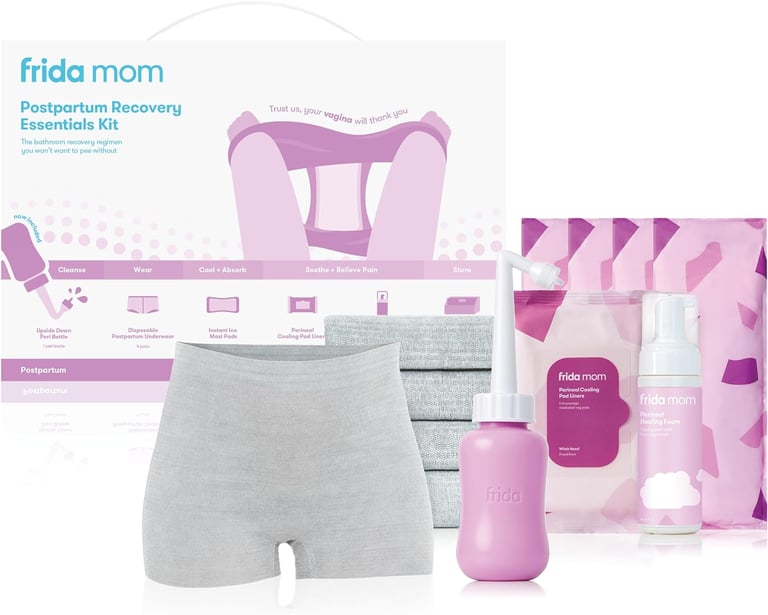

8. Not Leveraging Discounts and Registry Perks
When creating your baby registry, it's easy to overlook one of the most valuable aspects: discounts and perks offered by many retailers. These benefits can greatly reduce your out-of-pocket expenses and make your registry even more rewarding. Let’s dive into how to maximize these hidden gems!
Hidden Benefits Many Registries Offer
Many retailers provide perks that are designed to ease your journey as an expectant parent. These benefits can make a huge difference in your overall costs and shopping experience:
Completion Discounts: A percentage off the items that remain on your registry after your baby shower.
Welcome Boxes: Free samples, coupons, and essential baby items just for signing up.
Group Gifting Options: Allowing multiple people to contribute toward larger items like strollers, cribs, or high chairs.
Price Matching: Ensuring that you always get the best deal on your registry items.
Extended Return Policies: Giving you extra time to decide if an item is right for you and your baby.
Examples of Popular Stores and Their Completion Discounts
Here’s a quick overview of some top retailers and the perks they offer to make your registry experience even better:
Amazon Baby Registry: Offers a 15% completion discount (10% for non-Prime members) along with a generous welcome box filled with baby essentials.
Target Baby Registry: Provides a 15% completion discount, a free welcome kit, and a year-long return policy for most registry items.
BuyBuy BABY: Offers a 15% completion discount, along with frequent coupons to help with additional savings.
Walmart Baby Registry: Features free welcome boxes and group gifting options for big-ticket items.
Pottery Barn Kids: Includes a 20% completion discount and stylish nursery essentials to make your space even more cozy.
How to Time Your Registry to Maximize Savings
Timing plays a key role when it comes to making the most of registry perks. Here are some strategies to help you maximize savings:
Start Early: Begin your registry early in your pregnancy to take advantage of welcome boxes, early access deals, and other exclusive offers.
Wait for Sales: Many stores run promotions on baby gear during major holidays such as Black Friday, Memorial Day, or Prime Day. Plan your purchases around these events to maximize savings.
Set an Expiration Reminder: Completion discounts often have a time limit. Mark the end date on your calendar to ensure you don’t miss out on these valuable savings.
Prioritize Big-Ticket Items: Focus on using your completion discount for larger items like cribs, car seats, strollers, and high chairs to save the most money.
By fully understanding and taking advantage of registry discounts and perks, you can save a significant amount and get the most value out of your baby registry. It’s all about shopping smarter—not harder!
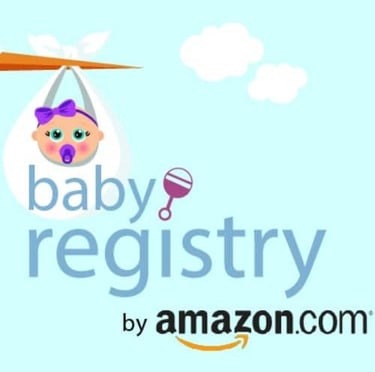

9 Forgetting About Long-Term Use Items
When creating your baby registry, it’s easy to focus solely on the immediate needs—tiny clothes, newborn bottles, and diapers. However, forgetting about long-term use items can end up costing you more over time. By thinking ahead, you can choose gear that adapts as your baby grows, saving both money and effort in the long run.
Items That Grow with Your Baby (and Why They’re Worth It)
Long-term use items are designed to evolve as your child grows. Though they might have a higher upfront cost, these items save you from the hassle and expense of frequent replacements. Here’s why they’re worth considering:
Cost-Effectiveness: You avoid buying multiple products for each growth stage, saving money in the long run.
Convenience: Adjustable features mean you don’t have to constantly shop for upgrades or replacements as your baby grows.
Eco-Friendly Choice: Fewer items to replace means less waste, making it a more sustainable option.
Versatility: Many long-term use items are multifunctional, offering multiple uses over time.
Examples of Convertible or Adjustable Baby Gear
Here are some essential long-term use items that parents swear by:
Convertible Car Seats: These car seats transition from rear-facing to forward-facing and sometimes into booster seats, covering several years of use.
(Examples: Graco 4Ever DLX or Britax One4Life.)Cribs That Convert to Beds: These cribs can transform into a toddler bed and later into a full-size bed, making them a long-lasting investment.
(Examples: DaVinci Kalani 4-in-1 or Delta Children Emery Crib.)High Chairs with Adjustable Heights: These high chairs can be converted into booster seats, growing with your child’s needs.
(Examples: Stokke Tripp Trapp or Graco Table2Table.)Strollers with Growth Features: Look for strollers with adjustable seats or the ability to expand to accommodate siblings.
(Examples: UPPAbaby VISTA V2 or Baby Jogger City Select.)Playards with Multiple Uses: Some playards double as bassinets, changing stations, and safe play areas for toddlers.
(Examples: Graco Pack 'n Play or 4moms Breeze Plus.)
Saving Money by Thinking Long-Term
Although the initial cost of long-term items may seem steep, the savings over time are significant. Here’s how thinking ahead helps your budget:
Fewer Replacements: You won’t need to buy separate toddler car seats, booster seats, or new cribs as your baby grows.
Multi-Stage Gear: Gear that evolves with your baby eliminates the need for additional purchases as they age.
Resale Value: Durable, high-quality items often retain value, meaning you can sell them when you no longer need them.
Better Registry Choices: Friends and family are more likely to invest in long-term items, knowing that they are both practical and valuable.
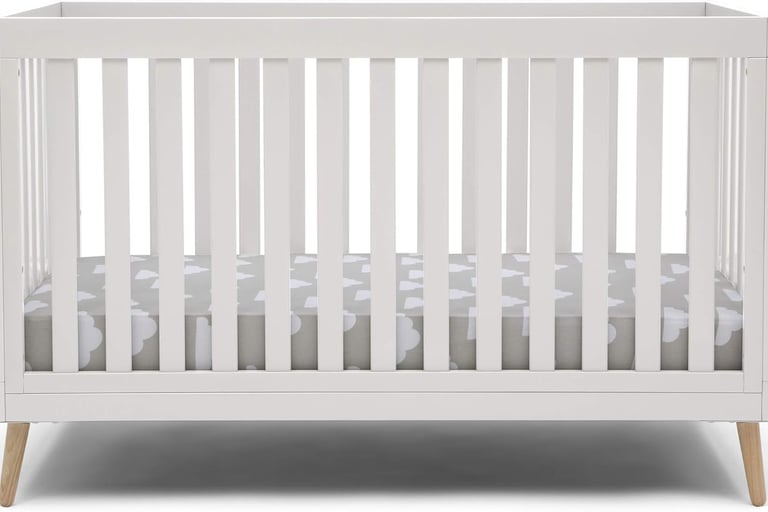

10. Not Asking for Help or Input
Creating a baby registry can be overwhelming, with countless options and a constant stream of advice from every direction. One mistake that can make it even harder is trying to go it alone. Consulting experienced parents or loved ones can save you time, help you make better decisions, and prevent costly mistakes.
Why Consulting Experienced Parents Can Save You Time
There’s no better resource than someone who’s already gone through the baby gear journey. Experienced parents have lived through the trial-and-error process of selecting products, and their insights can help you avoid common pitfalls. Here's how their advice can save you time:
Product Reviews in Real Life: They’ve actually used the products you’re considering and can give you honest feedback on what works well and what doesn’t.
Avoiding Overhyped Items: They’ll help you steer clear of trendy products that sound amazing but may not live up to the hype.
Prioritizing Essentials: Parents can help you identify must-have items versus “nice-to-haves,” saving you time and money.
Sharing Lessons Learned: From brand recommendations to tips on what to skip, their experiences can guide you in making smarter choices.
Questions to Ask When Seeking Advice
When reaching out for advice, it’s important to ask the right questions. Here are some great open-ended questions to get the most helpful input:
What’s one product you couldn’t live without?
Was there anything you registered for but never used?
Are there specific brands you’d recommend—or avoid?
Did you discover any unexpected items that made life easier?
What did you wish you’d included on your registry but didn’t?
How did you balance budget-friendly and premium options?
These questions can spark insightful conversations and give you a more realistic perspective on the gear you’re considering.
How to Involve Loved Ones Without Losing Control of Your Registry
While advice from others can be invaluable, it’s important to maintain control over your own registry. Here’s how to involve others while keeping your vision intact:
Start with Your List: Begin by drafting your registry to have a clear sense of what you need before seeking advice.
Ask for Feedback, Not Overhaul: Share your list with a trusted parent or friend and ask for input on specific aspects, such as missing essentials or recommendations for particular brands.
Set Boundaries: Politely decline suggestions that don’t feel right or align with your preferences. A simple “Thanks for the suggestion, I’ll look into it!” can work well.
Leverage Group Wisdom: Host a small gathering or virtual chat with other experienced parents to brainstorm together. Hearing multiple perspectives can help you identify shared must-haves.
Keep the Final Say: Remember that your registry is ultimately your decision. Use the advice as a guide, not as a strict rulebook.
Asking for help doesn’t mean relinquishing control. It means tapping into a wealth of knowledge to make better, more informed choices. A little input from experienced parents or loved ones can save you time, prevent regrets, and ensure your registry meets your specific needs. So don’t hesitate to reach out—you may be surprised by the valuable advice they have to offer!
Here are some related links:
Best Time to Create your Baby Registry
How to Create the Ultimate Baby Registry: A Step-by-Step Guide
Conclusion:
Creating a baby registry can be a challenging but rewarding experience. By avoiding the common pitfalls highlighted in this post, you can simplify the process and focus on what really matters. Planning ahead and using available resources will save you time and stress. Remember, this journey is not just for your baby; it’s about making your life easier too. Embrace the excitement of this new chapter, and start your registry with confidence today.
